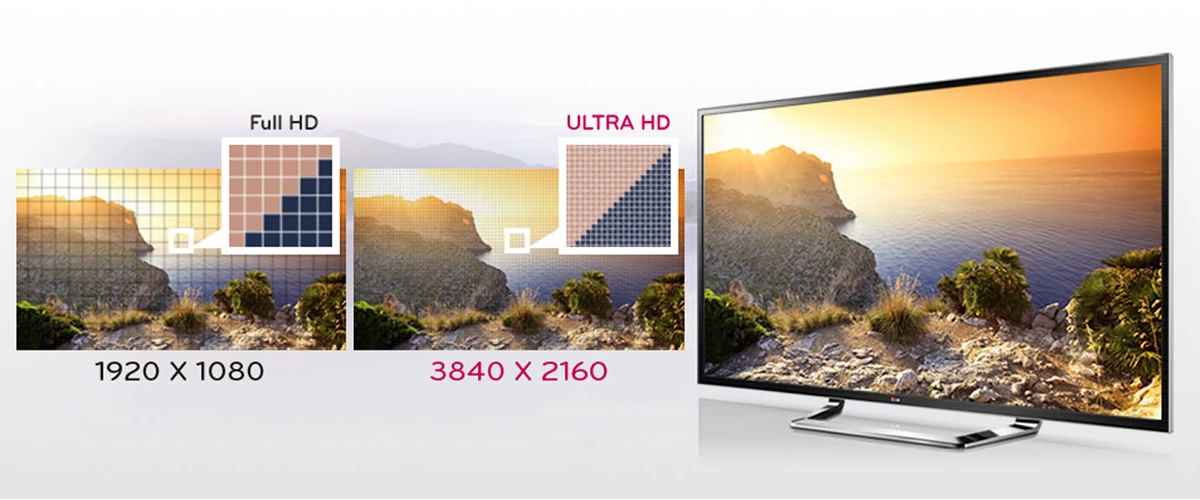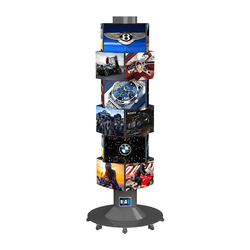
1. What Are 4K Refresh Rate and 4K Resolution?
Simply put, 4K resolution refers to the level of detail in a static image, while 4K refresh rate determines the smoothness of a dynamic image. One is related to "space" (the pixels on the screen), and the other is related to "time" (how quickly the image changes).2. 4K Refresh Rate
A. The Definition
Refresh rate is the number of times the screen updates its image per second.
B. How It's Measured
The unit for refresh rate is Hertz (Hz). For example: 4K @ 60Hz: Means the screen can refresh the image 60 times per second at a 4K resolution.
4K @ 120Hz/144Hz: Means it can refresh 120 or 144 times per second.
C. What It DeterminesSmoothness of Dynamic Images:
I: A higher refresh rate means more images are displayed per second, resulting in smoother motion and less stuttering or motion blur. This is especially noticeable in fast-paced video games (like FPS shooters or racing games) or when watching high-speed content like sports.
II: Responsiveness: A high refresh rate typically means lower input lag, making your mouse movements and clicks feel more immediate and responsive.
D. An Analogy.
Think of it like the speed of flipping a flipbook. Flipping 60 pages per second (60Hz) will look more fluid and continuous than flipping 30 pages per second (30Hz). Refresh rate is the speed of the "transition between frames."
3. 4K Resolution
A. The Definition
4K resolution refers to the number of pixels on the screen.B. How It's Measured
It's typically expressed as the number of horizontal pixels by the number of vertical pixels.
The mainstream consumer 4K standard is 3840 x 2160 pixels. This means your screen has 3840 pixels horizontally and 2160 pixels vertically.
C. What It DeterminesImage Detail and Sharpness:
I: The more pixels on a screen of the same size, the higher the pixel density (PPI). This results in a sharper, clearer image, making it more difficult to see individual pixels (often referred to as "pixelation" or "graininess").
II: This is the quality of a static image.Content Capacity: At the same zoom level, a 4K screen can display more content than a 1080p screen. For example, you can open multiple windows side-by-side and still see each one clearly.
D. An Analogy.
Think of it like the size and detail of a photograph. A 4K photo contains more pixel information than a 1080p photo, so it remains clear when you zoom in. Resolution is the quality of "a single frame."
| Feature | 4K Refresh Rate
| 4K Resolution(Definition) |
|---|
| Essence | The smoothness of a dynamic image. | The sharpness of a static image. |
| What It Measures | The frequency of screen updates per second (e.g., 60Hz, 120Hz, 144Hz). | The number of pixels (e.g., 3840x2160). |
| Determined By | Panel technology and interface bandwidth (e.g., HDMI 2.1, DP). | The panel's native pixel count. |
| Main Impact | Fluidity of gaming, web scrolling, and cursor movement. | Clarity of images, text, and video. |
| Analogy | The speed of flipping a flipbook. | The size and detail of a single photograph. |
4. Their Interrelationship
To get the best 4K experience, resolution and refresh rate must work in synergy and require the right content source and hardware
Content Source: The video or game you're playing needs to support a high resolution and high frame rate. If you're watching a 4K movie with only 30 frames per second, it will still play at 30 frames per second, even on a 120Hz screen.
Graphics Card Performance: Outputting a 4K resolution is already a heavy load on a graphics card. Outputting a 4K @ 120Hz image requires significantly more powerful graphics card performance than 4K @ 60Hz. If your graphics card can only achieve 50 frames per second in a game at 4K, you will only experience a 50Hz effect, even with a 144Hz screen.
Cables and Ports: Transmitting a high-refresh-rate 4K signal requires sufficient bandwidth. Traditional HDMI 2.0 can only support 4K @ 60Hz. To achieve 4K @ 120Hz/144Hz, you need a HDMI 2.1 cable and display device, or a DisplayPort 1.4 or higher port.








